Differences Between Male and Female Parrots
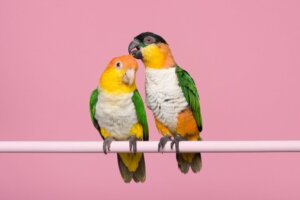

Written and verified by the psychologist Sara González Juárez
The differences between male and female parrots are easy to find in some species, but not so much in others. In fact, some require the intervention of an expert in the field or a DNA analysis of the bird.
If you’re interested in this topic and want to learn to recognize the sexual dimorphism of the most common psittacine parrots in homes, here are the keys so that you know what to look for. You may find it difficult at first glance, but don’t worry, with a little bit of practice, you’ll soon be able to differentiate the sexes of your birds in a matter of minutes.
Characteristics of the order Psittacidae
Parrots, birds of the Psittaciformes family, are gregarious and extremely intelligent animals. Their beautiful appearance and their ability to mimic human speech have prompted many bird lovers to have one in their home.
Their most typical habitat is the South American neotropical rainforest, but parrots also live in other parts of the world. Sub-Saharan Africa, for example, is home to the 10 members of the subfamily Psittacinae, which includes the well-known grey parrot (Psittacus erithacus).
They’re omnivorous animals whose diet consists mostly of seeds and fruits available in their habitat. It’s possible to find them in dense forests as well as in savannahs and even in cities, where psittacines such as the Monk parakeet (Myiopsitta monachus) have become established as invasive species in regions where they aren’t endemic.
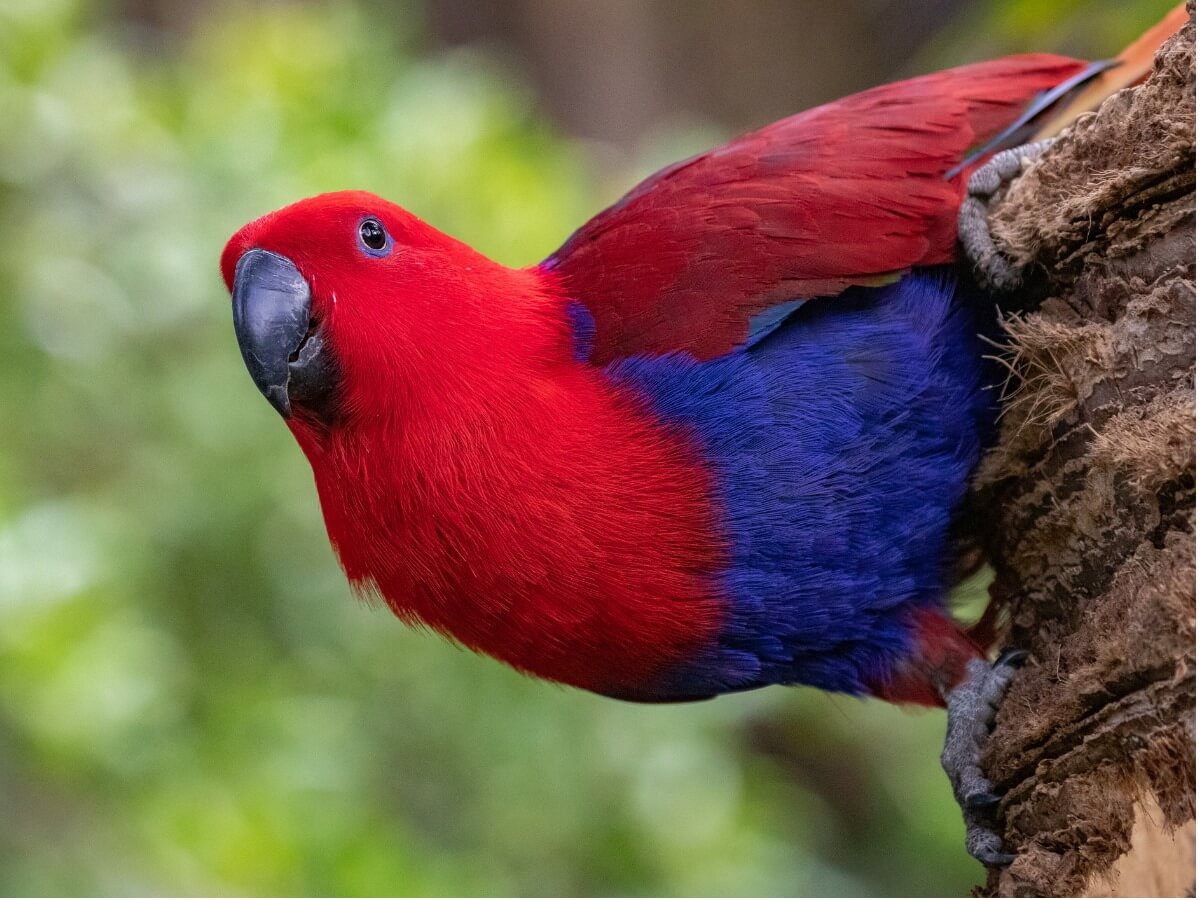
Sexual dimorphism in male and female parrots
The differences between male and female parrots vary depending on the species, with some being very striking and others almost non-existent to the naked eye. Here are several significant examples of this.
Cockatiels (Nymphicus hollandicus)
These small cockatoos are very popular in homes because of their adorable appearance and small size. Also, although they don’t all develop the ability to pronounce words, they are excellent whistlers and like to play melodies.
At first glance, it may seem that there are no differences between males and females in this species, but some can be found in the ancestral, pearly, and white-faced varieties.
- Ancestral nymphs: The females have the blush and the yellow of the crest in a fainter color than the males. They also have dark stripes under the tail.
- Pearly: The males lose the pearly pattern on the wings (which gives this variety its name) with the first molt. The females, on the contrary, keep it.
- White-faced nymphs: The males have a white facial coloration, while the females are grayish and with a less extensive area.
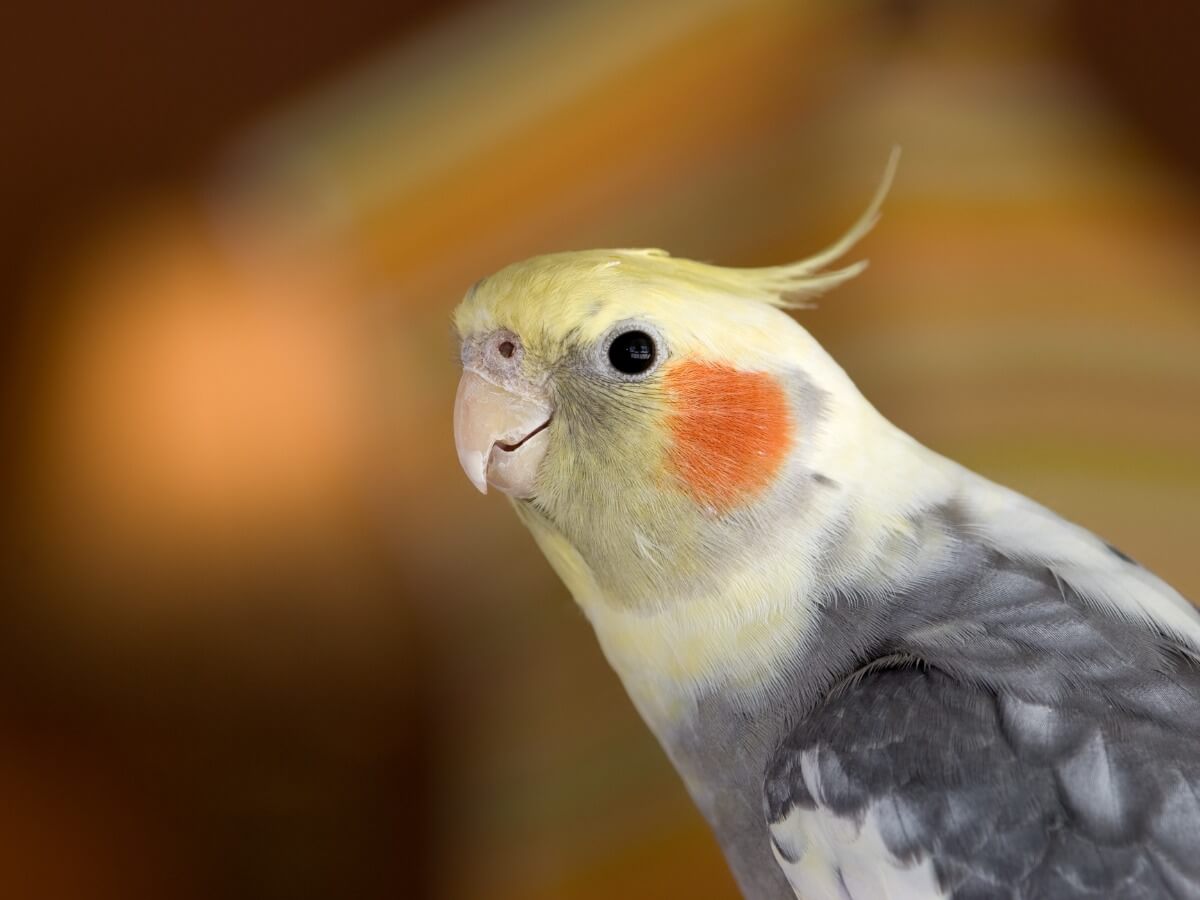
Moluccan eclectus (Eclectus roratus)
This sexual dimorphism is probably the easiest to see. The plumage of the males is deep green, dotted with red and blue spots on the wings, and they have an orange bill. On the other hand, the feathers of the females are red except for the breast, which is a rather striking electric blue tone. In addition, their beak is black.
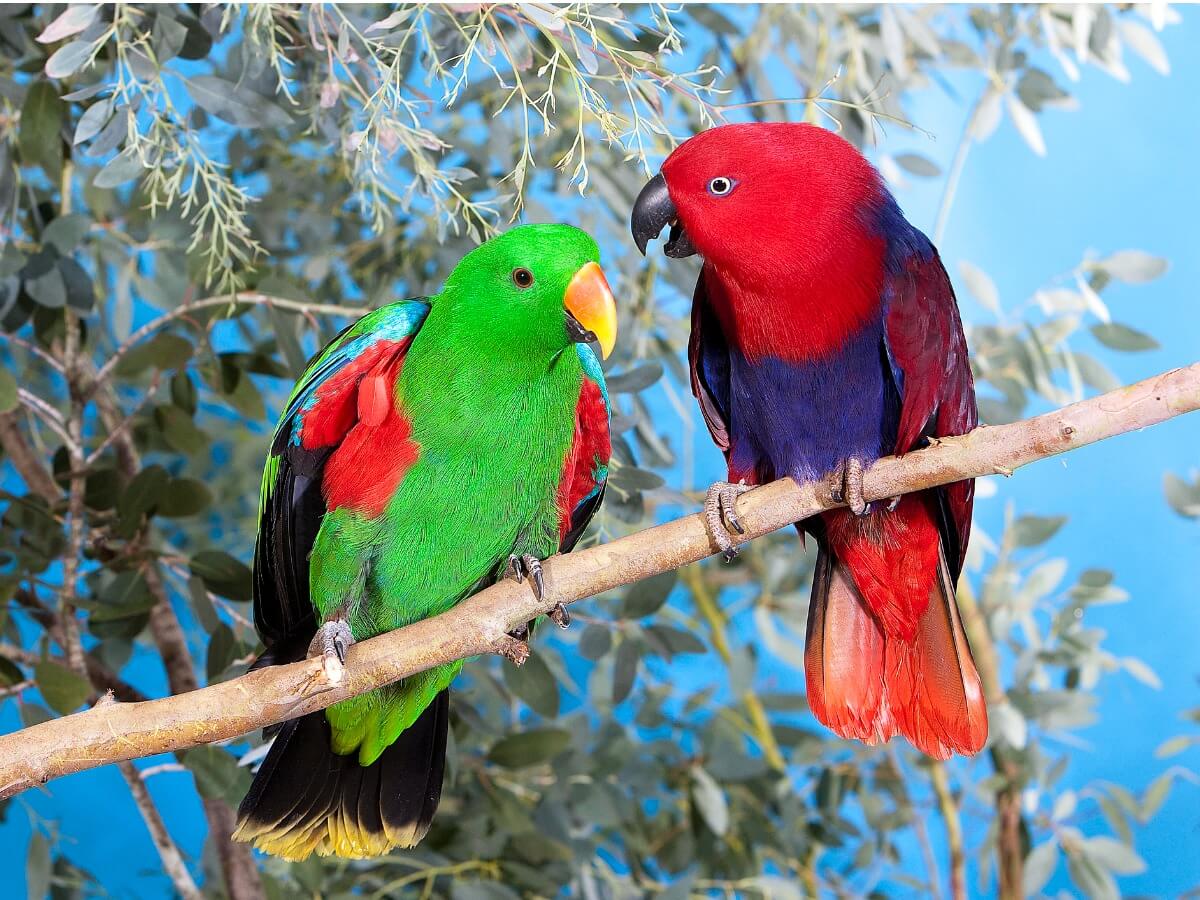
Budgerigar (Melopsittacus undulatus)
This is another household favorite, as they’re less noisy than the larger psittacines due to their small size. They’re also very intelligent and sociable, forming a close bond with their caregivers and enjoying spending time with them.
The difference between the sexes of budgerigars is also easy to see: although the plumage is identical, the structure above the beak, where the nostrils are, differs in color. Males have a deep blue color, while females show a very faint blue or pinkish color. The young, on the other hand, have a pinkish-white structure until they mature.
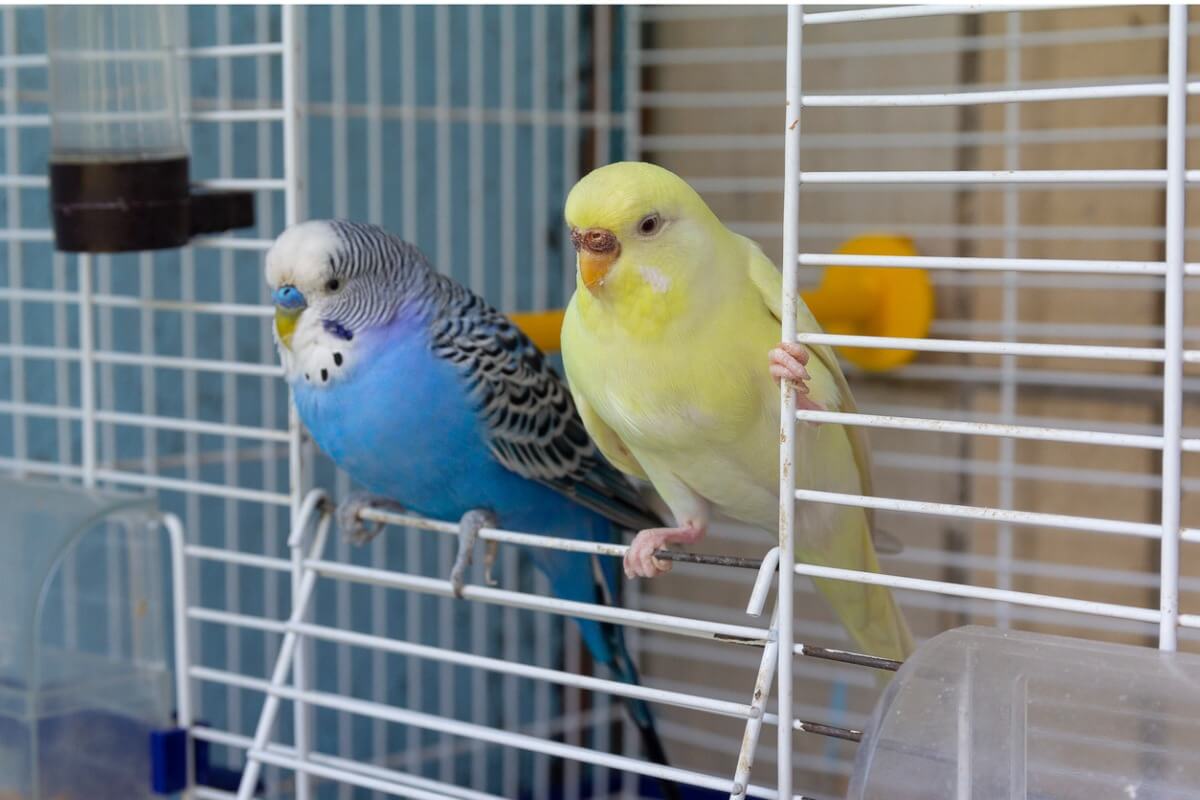
Rose-ringed parakeet (Psittacula krameri)
Although the keeping of this psittacine has been banned in different parts of the world due to its introduction as an invasive species, there are still some in captivity. The sexual dimorphism in this species is also clear: males show a black collar at the base of the head, a feature that females lack.
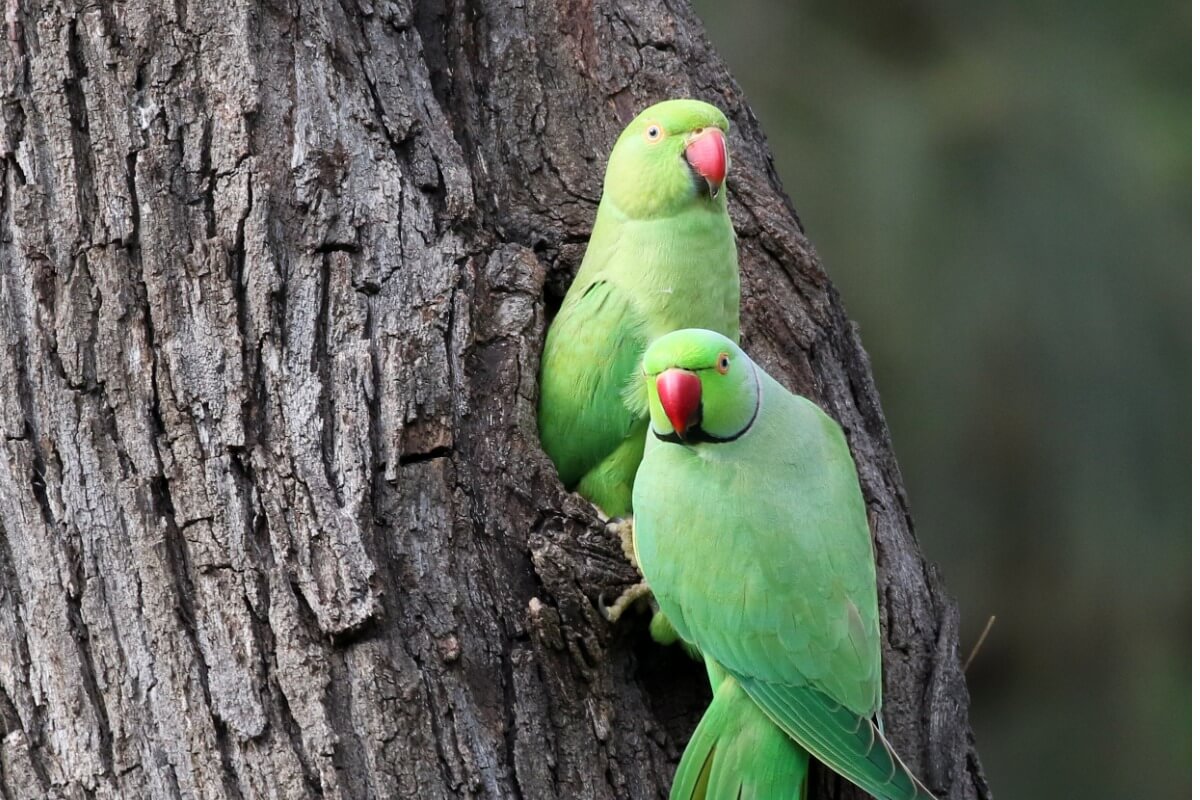
Cockatoos (Cacatuidae)
Cockatoos are another of the large psittacines that succeed in homes that can afford to keep them. There are several species that are kept in captivity, such as the cockatoo alba (Cacatua alba), the yellow-crested cockatoo (Cacatua galerita), or the Major Mitchell’s cockatoo (Lophochroa leadbeateri).
The differences between male and female parrots of these species is a little more subtle. As they grow, the females develop a lighter iris, of a brown or reddish color, while the males maintain the black tone. However, it’s necessary to get close to the bird to appreciate this differential feature.
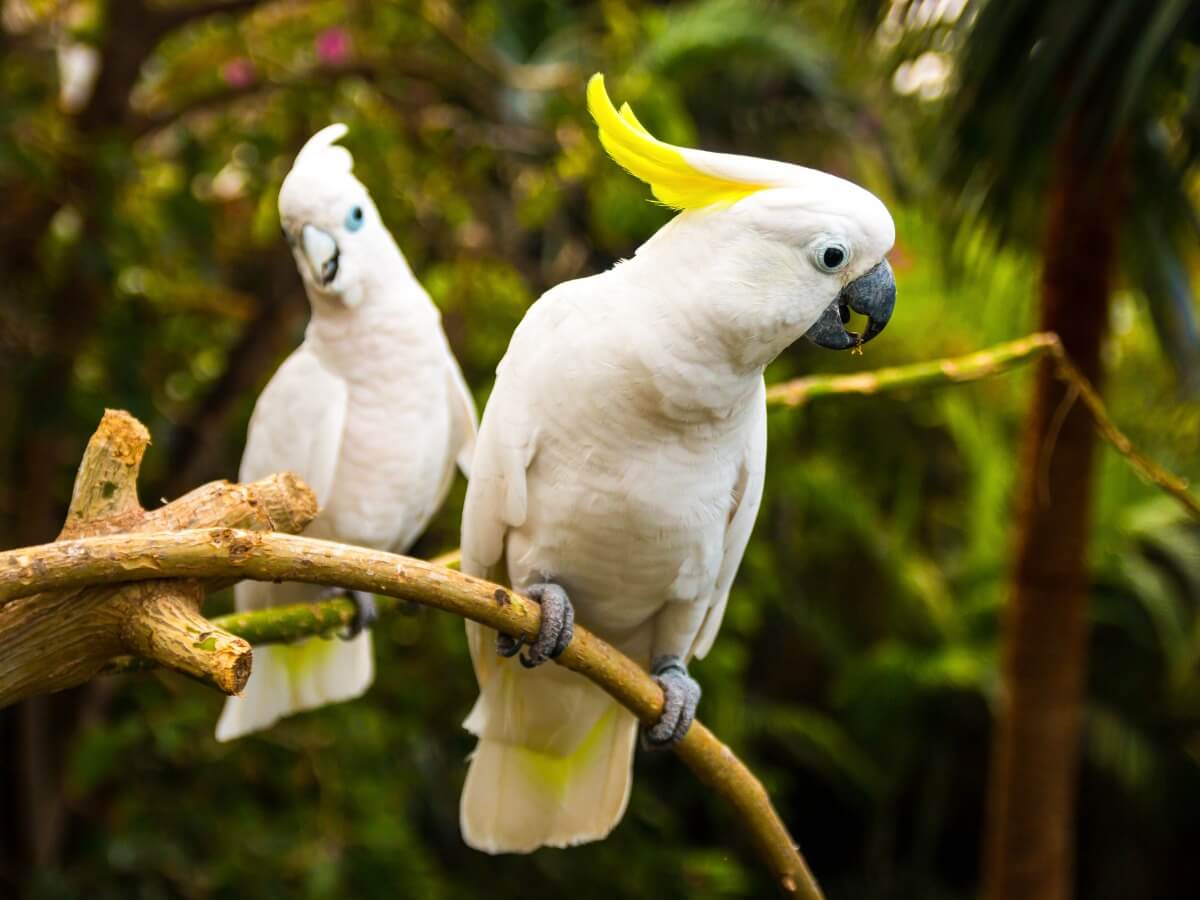
Sexing methods in psittacines
Other species, such as macaws, caiques, or African yacos, don’t have any distinguishing features to differentiate between male and female parrots. Therefore, if you need to know the sex of a specimen, you must resort to some of these techniques:
- Palpation: Males usually develop a lump in the pelvic area when mature. Females, on the other hand, have a flattened pelvic structure.
- DNA study: A blood sample is collected and analyzed to find out their sex chromosomes. It’s a test that’s carried out in the laboratory, somewhat invasive, stressful for the animal, and quite expensive.
- Egg laying: Obviously, only females lay eggs. If you don’t want to resort to either of the 2 previous techniques, you can simply wait for one of them to lay an egg!
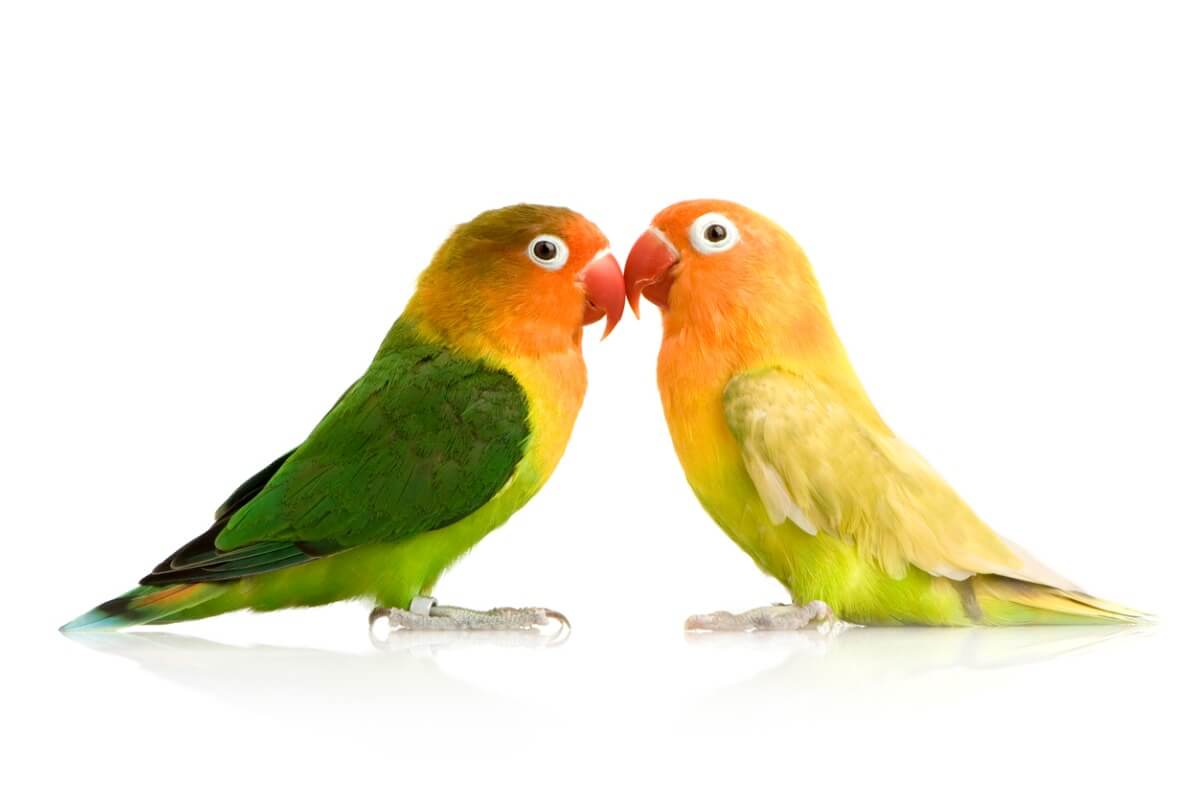
While it’s true that there are differences in behavior between male and female psittacine parrots, such as the tendency to talk, or aggressiveness, this isn’t a reliable method to determine their sex. Parrots are complex and intelligent beings, so their personality is as variable as that of any human.
The differences between male and female parrots are easy to find in some species, but not so much in others. In fact, some require the intervention of an expert in the field or a DNA analysis of the bird.
If you’re interested in this topic and want to learn to recognize the sexual dimorphism of the most common psittacine parrots in homes, here are the keys so that you know what to look for. You may find it difficult at first glance, but don’t worry, with a little bit of practice, you’ll soon be able to differentiate the sexes of your birds in a matter of minutes.
Characteristics of the order Psittacidae
Parrots, birds of the Psittaciformes family, are gregarious and extremely intelligent animals. Their beautiful appearance and their ability to mimic human speech have prompted many bird lovers to have one in their home.
Their most typical habitat is the South American neotropical rainforest, but parrots also live in other parts of the world. Sub-Saharan Africa, for example, is home to the 10 members of the subfamily Psittacinae, which includes the well-known grey parrot (Psittacus erithacus).
They’re omnivorous animals whose diet consists mostly of seeds and fruits available in their habitat. It’s possible to find them in dense forests as well as in savannahs and even in cities, where psittacines such as the Monk parakeet (Myiopsitta monachus) have become established as invasive species in regions where they aren’t endemic.

Sexual dimorphism in male and female parrots
The differences between male and female parrots vary depending on the species, with some being very striking and others almost non-existent to the naked eye. Here are several significant examples of this.
Cockatiels (Nymphicus hollandicus)
These small cockatoos are very popular in homes because of their adorable appearance and small size. Also, although they don’t all develop the ability to pronounce words, they are excellent whistlers and like to play melodies.
At first glance, it may seem that there are no differences between males and females in this species, but some can be found in the ancestral, pearly, and white-faced varieties.
- Ancestral nymphs: The females have the blush and the yellow of the crest in a fainter color than the males. They also have dark stripes under the tail.
- Pearly: The males lose the pearly pattern on the wings (which gives this variety its name) with the first molt. The females, on the contrary, keep it.
- White-faced nymphs: The males have a white facial coloration, while the females are grayish and with a less extensive area.

Moluccan eclectus (Eclectus roratus)
This sexual dimorphism is probably the easiest to see. The plumage of the males is deep green, dotted with red and blue spots on the wings, and they have an orange bill. On the other hand, the feathers of the females are red except for the breast, which is a rather striking electric blue tone. In addition, their beak is black.

Budgerigar (Melopsittacus undulatus)
This is another household favorite, as they’re less noisy than the larger psittacines due to their small size. They’re also very intelligent and sociable, forming a close bond with their caregivers and enjoying spending time with them.
The difference between the sexes of budgerigars is also easy to see: although the plumage is identical, the structure above the beak, where the nostrils are, differs in color. Males have a deep blue color, while females show a very faint blue or pinkish color. The young, on the other hand, have a pinkish-white structure until they mature.

Rose-ringed parakeet (Psittacula krameri)
Although the keeping of this psittacine has been banned in different parts of the world due to its introduction as an invasive species, there are still some in captivity. The sexual dimorphism in this species is also clear: males show a black collar at the base of the head, a feature that females lack.

Cockatoos (Cacatuidae)
Cockatoos are another of the large psittacines that succeed in homes that can afford to keep them. There are several species that are kept in captivity, such as the cockatoo alba (Cacatua alba), the yellow-crested cockatoo (Cacatua galerita), or the Major Mitchell’s cockatoo (Lophochroa leadbeateri).
The differences between male and female parrots of these species is a little more subtle. As they grow, the females develop a lighter iris, of a brown or reddish color, while the males maintain the black tone. However, it’s necessary to get close to the bird to appreciate this differential feature.

Sexing methods in psittacines
Other species, such as macaws, caiques, or African yacos, don’t have any distinguishing features to differentiate between male and female parrots. Therefore, if you need to know the sex of a specimen, you must resort to some of these techniques:
- Palpation: Males usually develop a lump in the pelvic area when mature. Females, on the other hand, have a flattened pelvic structure.
- DNA study: A blood sample is collected and analyzed to find out their sex chromosomes. It’s a test that’s carried out in the laboratory, somewhat invasive, stressful for the animal, and quite expensive.
- Egg laying: Obviously, only females lay eggs. If you don’t want to resort to either of the 2 previous techniques, you can simply wait for one of them to lay an egg!

While it’s true that there are differences in behavior between male and female psittacine parrots, such as the tendency to talk, or aggressiveness, this isn’t a reliable method to determine their sex. Parrots are complex and intelligent beings, so their personality is as variable as that of any human.
All cited sources were thoroughly reviewed by our team to ensure their quality, reliability, currency, and validity. The bibliography of this article was considered reliable and of academic or scientific accuracy.
- Betancur, C. L., Aguilar, S. B., Barrera, C. F., & Mesa, H. (2017). Cytogenetic and molecular sexing of psittacides. Boletín Científico. Centro de Museos. Museo de Historia Natural, 21(1), 112-121.
- del-Valle, C. M. (2008, June). Introducción a la biología y ecología de las psitácidas neotropicales. In Memorias de la Conferencia interna en medicina y aprovechamiento de fauna silvestre, exótica y no convencional (Vol. 4, No. 1, pp. 4-6).
This text is provided for informational purposes only and does not replace consultation with a professional. If in doubt, consult your specialist.








